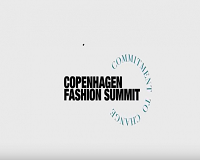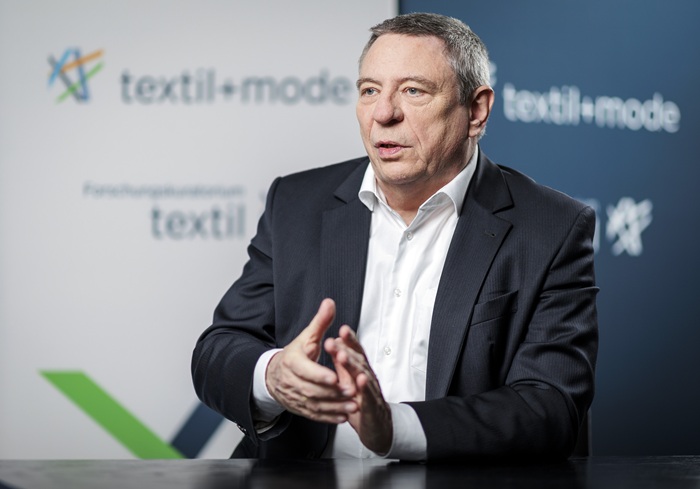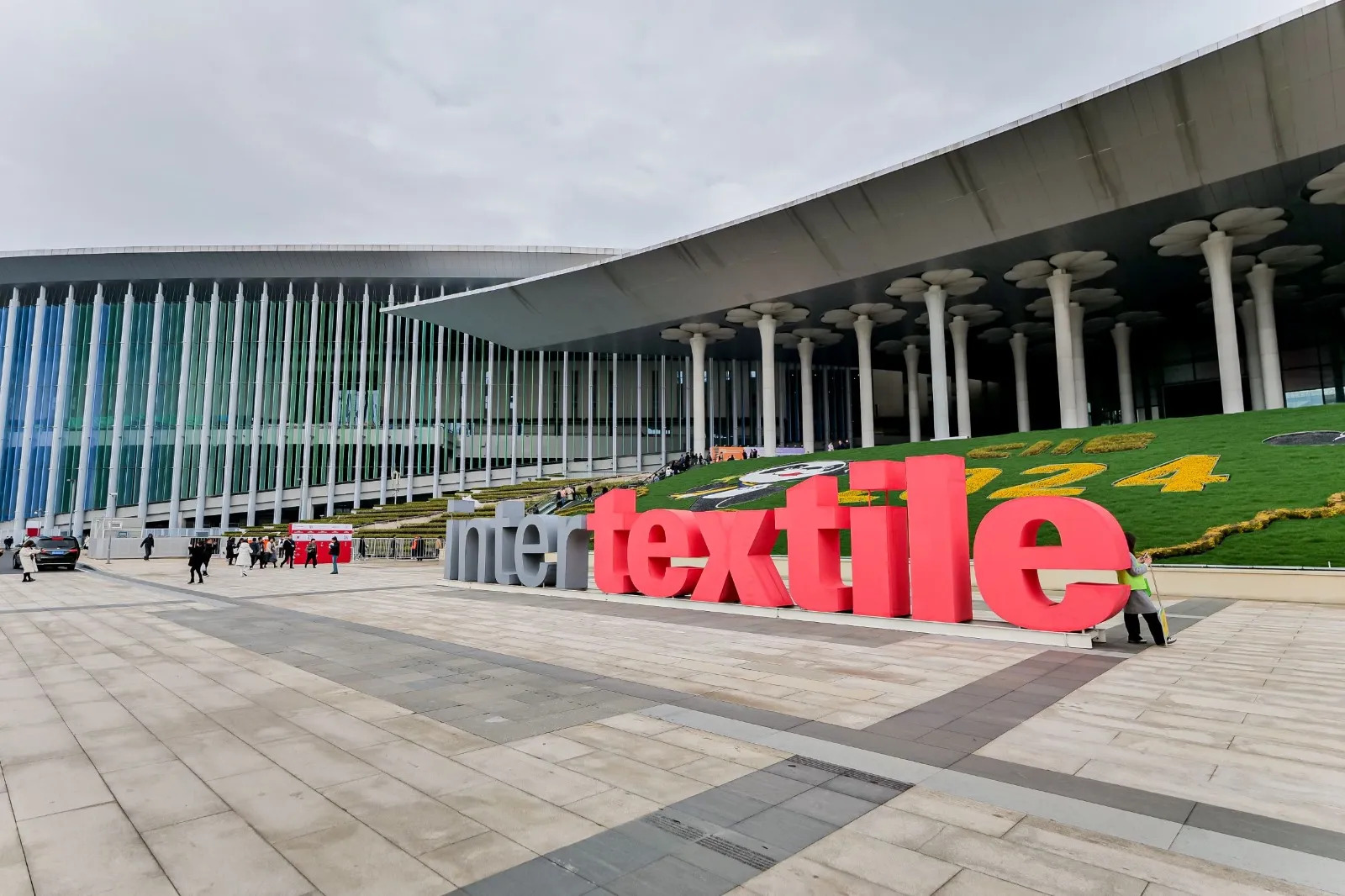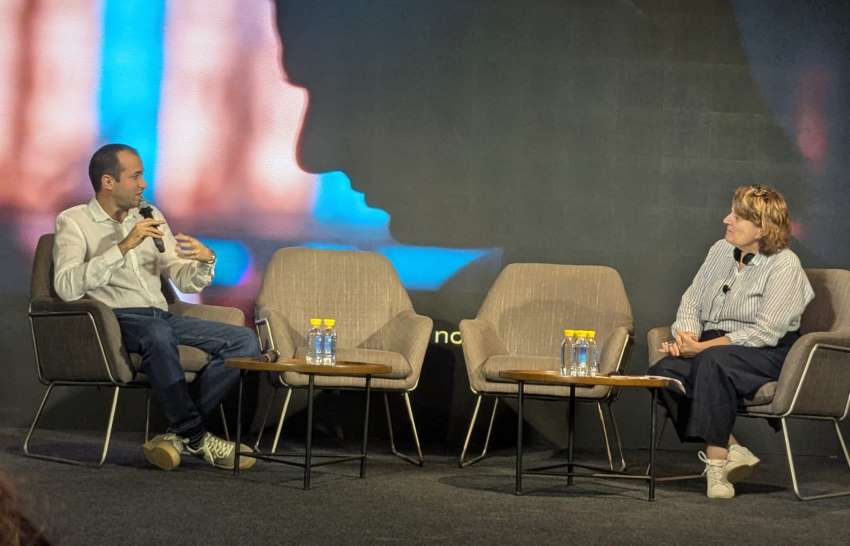FW
If growth in fashion continues along its current trajectory, by 2050 the textile industry would account for around a quarter of the world’s total allowable carbon emissions.
In order to circumvent the eco impact, leading companies are coming up with sustainable solutions to chart green growth.
Fashion companies have on the whole managed to improve their environmental and social performance over the last year. The industry's various segments, however, are moving at highly different speeds.
To put fashion on a path to long-term prosperity financially, socially and environmentally, there is a need to go beyond what is available and possible today. To achieve lasting impact at scale, the industry needs systemic change through leadership, innovation and collaboration.
A number of promising, disruptive innovations are emerging to move the industry - but success will depend on a strong ecosystem rooted in the efforts of regulators, consumers, nongovernmental organisations, and other stakeholders.
Sustainability can actually increase profitability for fashion companies.
Lyocell for example is a fiber made from wood pulp and has a low environmental impact in its production and processing when compared to alternatives like cotton. Because of its growing sustainable properties, companies are making it a feature within their product lines.
China and the US have decided to defer the implementation of the new tariffs and take effective measures to substantially reduce the US trade deficit in goods with China besides supporting growth and employment in US.
These constructive consultations regarding trade were held recently in Washington, D.C. at the direction of US President Donald Trump and his Chinese counterpart Xi Jinping.
The delegations discussed expanding trade in manufactured goods and services.The delegations also discussed expanding trade in manufactured goods and services.
Both sides agreed to encourage two-way investment and to strive to create a fair, level playing field for competition.
They will also continue to engage at high levels on these issues and to seek to resolve their economic and trade concerns in a proactive manner.
Make it British Live is being held May 23 and 24. This is a trade show dedicated to UK manufacturers and British-made brands. This is the fifth edition of the show and some 5000 visitors are expected.
New and varied exhibitors are abundant this year, displaying a diverse range of fashion, accessory and homeware products. Many of the companies exhibiting are well over 100 years old, with two being founded in the 1700s.
Skills and training are high on the agenda this year. One of the halls has been dedicated to a manufacturing skills exhibition, which highlights the work being done to support a new generation of talent.
Of the 200 exhibitors at this year’s show, over 30 per cent are family businesses, including mother and daughter, husband and wife, father and son, and brother and sister teams. There are 28 garment manufacturers, seven machinery suppliers and 35 producers of accessories, from umbrellas and hip flasks to scarves and socks.
Make it British is the campaign to encourage more people to buy British and make in the UK. It is a platform for promoting UK manufacturers and British-made brands. Make it British Live began in 2014 and was originally called Meet the Manufacturer. This unique show prides itself on being the only sourcing event exclusively showcasing British manufacturers and producers.
Italian fashion brand Benetton is focusing on India in a big way. During its over two-decade journey in the country, the brand has witnessed a consistent growth and is now looking at leveraging the big potential that Indian retail offers in Tier III and Tier IV cities too.
India is the most important market outside Italy for the brand and is considered the number one subsidiary outside Italy. Benetton has opened a store in London, the latest flagship store. Possibly it is New Delhi which will have the second flagship store.
In India Benetton has grown consistently at a rate of 15 per cent to 18 per cent in the last seven or eight years.
As for the marketing strategy in India, Benetton has a lot of focus on digital and will allocate more than 50 per cent spends on digital since that is where the target audience, the 18 to 35 age group, is. TV is used very rarely. Spend wise, after digital, it is mostly print and outdoors.
Benetton was the first to realize the importance of online. It has strategically created a business vertical like footwear online and hopes to sell close to a million pairs of footwear by next year.
The recent statistics published by the US Department of Commerce, the United States revealed that US imported $2.2 billion worth of socks in 2017, while in the January-March period of 2018, it imported approximately $458.3 million worth of socks.
A bulk of this order; approximately 58 per cent, was imported from China. While El Salvador-the second largest supplier of socks - exported $253.4 million worth of socks in 2017. Honduras was in third place, exporting around $184 million worth, followed by Pakistan in fourth place with exports to the US worth just over $120 million in 2017.
US imports of hosiery in 2017 increased by 2.4% compared to the previous year, with China's exports increasing by 1.8 per cent. Exports from El Salvador increased by 23.1 per cent in the year.
Around 70 clothing retailers, including Hennes & Mauritz AB and Esprit Holdings have decided to ban the 1.5 billion rand ($117 million) Mohair industry in South Africa following the release of a video footage from twelve Angora goat farms in South Africa’s Karoo region.
The footage showed goats being dragged by the legs or horns and sustaining injuries from shearing. A worker decapitating a goat also featured.
Manufacturers from Ascena Retail Group Inc. to Inditex SA, which owns the Zara fashion chain, have now pledged to become “mohair-free.” South Africa produces about 50 percent of the world’s mohair and exports mainly to countries in Asia and Europe, including China, Italy, the UK and Taiwan.
It’s seen as a reliable supplier because the goats grow their fleeces year-round, which allows farmers to auction their produce over two seasons, in summer and winter. Mohair from South Africa is used to make suite by companies such as Ermenegildo Zegna Group.
"Numerous speeches and discussions enabled audiences to gain valuable perspective and insight on issues related to sustainability and more. Eco-pioneer Stella McCartney spoke about her own journey towards developing an eco-friendly approach, emphasizing the lack of support from the rest of the industry. Entrepreneur and academician David Roberts explained technologies do not disappear but are replaced. Like in the case of oil, competition from solar and wind power could well herald a decline in usage of this resource. "It’s good news. But what's less good news for you is that the textile industry will soon be the most polluting industry in the world, because at the moment you don't have solar power."
 Held over two days May 15 and 16, 2018 in Copenhagen, the sixth edition of the Copenhagen Fashion Summit, discussed innovative industry solutions and ecological and social challenges. The event, organized by the Global Fashion Agenda, was supported by top stakeholders in the global fashion industry including H&M, Nice, C&A and Li &Fung with representatives from unions, associations and other institutions, as well as founders of much smaller brands marking their presence.
Held over two days May 15 and 16, 2018 in Copenhagen, the sixth edition of the Copenhagen Fashion Summit, discussed innovative industry solutions and ecological and social challenges. The event, organized by the Global Fashion Agenda, was supported by top stakeholders in the global fashion industry including H&M, Nice, C&A and Li &Fung with representatives from unions, associations and other institutions, as well as founders of much smaller brands marking their presence.
An eco-friendly approach to fashion
Numerous speeches and discussions enabled audiences to gain valuable perspective and insight on issues related to sustainability and more. Eco-pioneer Stella McCartney spoke about her own journey towards developing an eco-friendly approach, emphasizing the lack of support from the rest of the industry. Entrepreneur and academician David Roberts explained technologies do not disappear but are replaced. Like in the case of oil, competition from solar and wind power could well herald a decline in usage of this resource. "It’s good news. But what's less good news for you is that the textile industry will soon be the most polluting industry in the world, because at the moment you don't have solar power. “
Ellen MacArthur's ‘Make Fashion Circular’ initiative, which aims to establish practices that would develop a truly circular economy in the fashion industry, is attracting an increasing number of brands and manufacturers. The sailor's determination has helped her get more than 50 brands on board, including important ones like Burberry, Nike and H&M. She goes on to say that the biggest players in the plastic industry have worked together to find a solution for packaging. That helped with regulation.
is attracting an increasing number of brands and manufacturers. The sailor's determination has helped her get more than 50 brands on board, including important ones like Burberry, Nike and H&M. She goes on to say that the biggest players in the plastic industry have worked together to find a solution for packaging. That helped with regulation.
Towards atomization
Progress in automation and IT systems have allowed the industry to develop faster solutions which better meet the expectations of final consumers, while also reducing unsold merchandise. Pete Santora of Sofwear Automation has developed a machine which optimizes the processes of cutting, sewing and assembling apparel and footwear. He plans to develop local distribution circuits with factories that are geographically close to their customers.
Adopting responsible strategies
Responsible business strategies are also being developed in China, where consumers are increasingly confronted with problems linked to pollution. As Robby Gu, Vice President-Innovation, JNBY Group points out developing responsible collections is not only about social engagement: it's an economic benefit for them. He said they came up against the problem of other companies copying their products. But by developing responsible sourcing and using quality materials, they ensured customers can tell the difference because of the feel and smell of the brand’s products.
This is one of the central ideas of the summit. All speakers admitted that adopting a responsible approach can imply costs and that it is often complicated for small or medium-sized businesses to know how to get started. But in the mid to long term, these commitments pay off, with 1-2 per cent growth in EBIT margin predicted for companies that make them.
Marie-Claire Daveu, Chief Sustainability Officer, Kering observed during a panel discussing the #Metoo movement and its impact on the industry, “When I think about the road we've travelled since last September in terms of protecting models during Fashion Weeks, it's impressive.” She goes on to say, "There are very few issues to which LVMH and Kering will both put their names to. But when it's about a subject of that scale, the change is radical." Now it's up to the industry to show that this kind of drastic change can also happen in environmental and social issues.
The EU’s apparel imports continued to surge in Jan-Feb 2018 too. According to the data has released recently by the European Commission.
The 28-nations bloc upped its apparel volume by 11.17 per cent while value got a boost of just 1.19 per cent all because of a massive drop of 8.96 per cent in unit prices.
Unit prices remained as low as € 17.07 as against € 18.75 in the same period last year.
Overall, China still holds the most supreme position in the EU’s apparel market with export worth € 4.60 billion in Jan.-Feb. ’18 period.
The volume of apparel shipment from China to the EU increased by 3.97 per cent on the Y-o-Y basis; however, the country noted a significant fall in value terms by 2.80 per cent.
The Garment Workers Coordination Parishad, which is a platform for readymade garment (RMG) workers comprising 52 organisations, has demanded that the minimum wage of the workers should be increased to Tk 16,000 ($189). Apparel workers in Bangladesh receive only $67 (Tk 5,300) per month, the lowest wage compared to all other countries in Asia.
It said that workers in India get $168, while those in Cambodia get $170. Workers in other countries like Pakistan, Vietnam and Myanmar receive $124, $154 and $86, respectively.
Kamrul Anam, joint convener of the association said that the workers should get Tk 16,000 as minimum wage with Tk 10,000 as basic salary to fulfil their monthly demands.
The leaders of the association have also asked for 10 per cent increment in salary every year, six months maternity leave and three months of apprenticeship period with basic salary. (KD)
"Significant investment in automation in the U.S. textile and apparel industry, particularly in yarn, thread, and fabric production, has depressed U.S. employment despite increases in domestic shipments”, according to the report titled “The Economic Effects of Significant U.S. Import Restraints" by the US International Trade Commission
In coming years, increased capital investment in automation should contribute to a further expected decline of 3.7 percent, on average, in employment in the textile and apparel industry during 2015–20.
The most significant decline is projected in the textile products (5.9 percent) and textile mills sectors (5.7 percent).
At the same time, U.S. textile and apparel exports are expected to increase 2.8 percent, with U.S. apparel exports increasing by 10 percent as a result of growing demand for higher-quality, specialised, or “Made in the USA” apparel.












